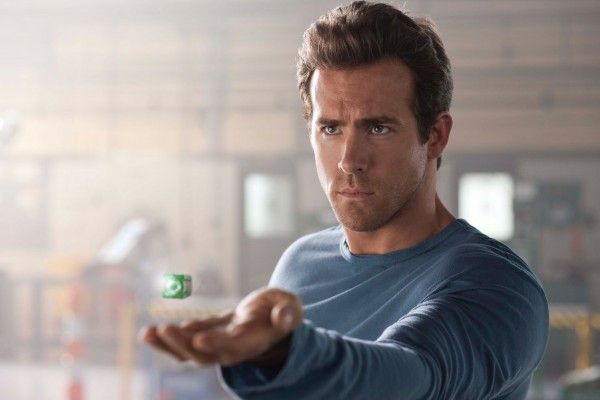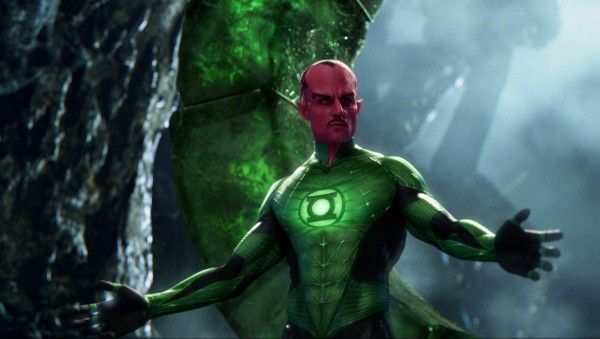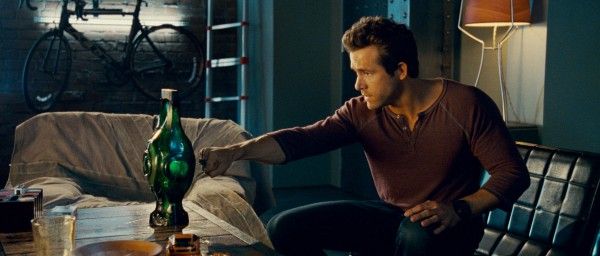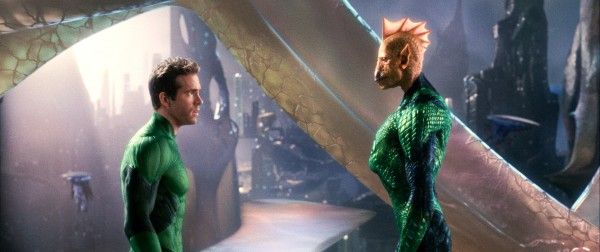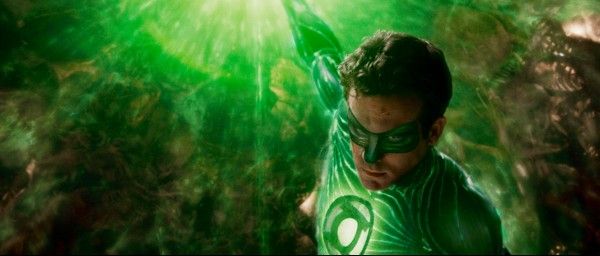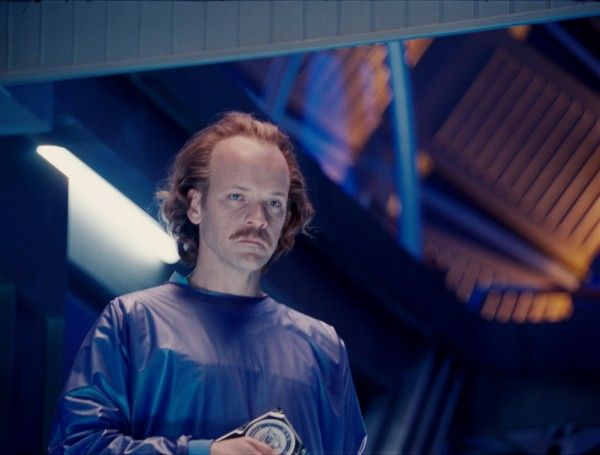Since Martin Campbell is considered one of the industry’s premier action filmmakers, as the man behind two landmark James Bond films (GoldenEye and Casino Royale) and two Zorro films (The Mask of Zorro and The Legend of Zorro), it’s easy to see why he was brought in to helm the superhero action-adventure flick Green Lantern. And, with veteran producer Donald De Line and producer/screenwriter Greg Berlanti also on board, the film is sure to be a blockbuster hit.
During a press conference at the film’s press day, Campbell, De Line and Berlanti talked about what it takes to create and launch a franchise like Green Lantern, condensing a great amount of source material into a movie that keeps fans of the character happy while also making it accessible for those unfamiliar with it, why they chose Hal Jordan as a starting point for the story, finding the right balance with how much of the film to have on Earth and how much to have in space, and how they hope to have some cool extras for the DVD/Blu-ray release. Martin Campbell also said that he’s not signed on to direct more Green Lantern films, at this point, that he hopes to do a small film next, and that there will be no more James Bond films in his future. Check out what they had to say after the jump:
Here’s the film’s synopsis:
In a universe as vast as it is mysterious, an elite, powerful force has existed for centuries. Protectors of peace and justice they are called the Green Lantern Corps, and each Green Lantern wears a ring that grants him the ability to create anything his mind can imagine. When a new enemy called Parallax threatens to destroy the balance of power in the Universe, their fate and the fate of Earth lie in the hands of their newest recruit, who also happens to be the first human ever selected – Hal Jordan (Ryan Reynolds). Hal is a gifted and cocky test pilot, but has trouble gaining respect from the other Green Lanterns, including Sinestro (Mark Strong), who does not like the young human species. But, Hal’s humanity is one weapon no member of the Corps has ever had and, with the encouragement of fellow pilot and childhood sweetheart Carol Ferris (Blake Lively), he quickly masters his new powers and finds the courage to overcome his fears to save Earth and all of mankind from certain destruction.
Question: Martin, you brought James Bond back twice, you brought Zorro to modern screens, and now you’re launching this major DC comic book franchise. What is it about you that is ideal for creating and launching these things?
MARTIN CAMPBELL: Well, I’m cheap. No, the thing is, I’d never done a comic book movie before. Superheroes, yes, because I guess Bond is a form of superhero and Zorro obviously is, but I’d never done a comic book movie before, and I wasn’t even versed in the comic when it came through the door. Once I read them, the whole world of Green Lantern fascinated me – going to another planet and going to the center of the universe. That’s really why I did it. What it is about me? These things aren’t about me, really. These things are a huge team effort by everybody. It’s always handed across to the director. I’m the guy on the floor, certainly, but Donald [De Line], my producer, was a huge contributor, as was Greg [Berlanti], the writer, and the actors. Unlike a lot of movies, these things are very much a team effort, and in this case, particularly so.
Greg, you’ve done a lot of TV writing and directing. What made you think you could write this movie, and where does your responsibility lie, as far as making this character pleasing to everyone?
GREG BERLANTI: I wrote the initial draft with a couple of other writers who I had worked with before, and we all shared a common love for the character. You’re trying to honor that, but you’re also just trying to tell a great story, and you hope that your own love and respect for the character will ultimately come through. That’s just a first draft, which is very loose architecture for ultimately what ends up happening because there are so many other voices. It’s such a massive team effort, when you’re building and constructing something like this. A lot of times, you end up feeling, in a good way, like a custodian of that character, but everyone’s building a much bigger ship.
It must be difficult to adapt any comic book because, while you have great source material, in the end, it has to be condensed into one movie, and you don’t want to let the fans down, but you also have to make it accessible to people unfamiliar with comics. How did you approach that?
BERLANTI: From the very beginning, when Donald [De Line] and I were hashing out the story, I was a little bit more the comic book geek and would come in and dump all that stuff on the table. That’s the cornerstone of what makes it so unique. Yes, it’s a superhero film and it’s a comic book movie, but there’s a real core philosophy to it. It’s rare, in these kind of films, when you’re dealing with heroes, to actually have a philosophical undercurrent which, in this case, was fear versus will. You try to honor that stuff, and make it interesting and appealing to you, so you’re your own first audience, in that way. You do things and write things that you think you would enjoy seeing, and then they get vetted, along the way.
Why did you guys decide to start from scratch with Hal Jordan for this film?
BERLANTI: As a comic book fan, there were probably two separate reasons. One was that Geoff Johns really had brought Hal Jordan back with Rebirth. When you’re sitting down and trying to honor what you feel like is the origin of the comic, it felt like the right place to start was at the Silver Age, and Hal was the first Earthling that was picked to go and join the Corps. As we constructed the story and pitched the studio, in terms of what the movie could be, and what subsequent films could be, it seemed like the natural place to start, with the hope of one day honoring the same order that the comic books had.
DONALD DE LINE: That’s exactly right. Hal Jordan being the first human that was picked to be a Green Lantern, and that is a big part of this story. The audience puts themselves in Hal Jordan’s shoes, and that’s what makes it a really interesting, powerful story, and a good way to introduce it to the world. That was a big part of the decision.
What’s the difference in filming a character like Green Lantern, in comparison to more well-known characters like Superman or Batman? Is there risk involved, since audiences aren’t as familiar with the character?
CAMPBELL: I don’t know if there’s a risk involved. The thing is, the Superman comics have been around a long time, and so have the movies. They’ve done a lot of Superman movies, as they have with Batman. You could say that Iron Man was a second-tier character, and it turned out very successfully. I simply think it’s down to the movie itself, and whether people enjoy the movie, are involved in the movie, and that it entertains them. From that point of view, the movie has to stand alone. Whether the superhero is second-tier or first-tier is irrelevant.
DE LINE: That’s correct. I also think that it was our job to educate audiences, so we had a little bit more work to do, in that regard. We’re introducing something to the world that a lot of people may not be familiar with, and that is not so much in people’s consciousness, like Superman or Batman may have been. With those characters, there have been television series and films, and they’re fairly simple mythologies and worlds to grasp. Green Lantern is quite complicated, just in terms of the fact that it is a core of 3,600 characters, there’s a pretty complicated mythology, and the ring is powered by will. There are a lot of things that you have to wrap your head around and get into, so it’s a very, very big canvas, which is also what made it incredibly exciting and appealing. We were very mindful of saying, “Even if you’ve never heard of the Green Lantern and you’ve never read a comic, this will be just as thrilling and fun for you, as a great ride and adventure, and a story to follow.”
CAMPBELL: I don’t think he’s necessarily a greater or lesser superhero than Superman or Batman, but their problems are all Earth-bound, so they’re much easier to film and do. Green Lantern deals with space and, up until now, the technology hasn’t been able to catch up with the vision. It’s much easier to make a Superman or Batman film than a Green Lantern film.
Martin and Donald, there are the four principal actors in the film, but the voice talent is also amazing. How did you gather all of them together?
CAMPBELL: I think we paid them.
DE LINE: It took strong incentive.
CAMPBELL: We had Geoffrey Rush for Tomar-Re, and Michael Clarke Duncan as Kilowog. It’s so interesting that, even the most talented actor, sometimes doesn’t actually fit the body or the character that you’re creating, so it’s experimentation. You have to get people in to test and you hope the voices go and that they give a great performance. I thought Geoffrey Rush was perfect for Tomar-Re, as was Michael Clarke Duncan for Kilowog.
DE LINE: It was a fun process. We listened to hundreds of actors and what we would do was take an image that was just a piece of artwork, of either Tomar-Re or Kilowog, because it was all we had. We had no animation, at the time, so we would take an image and put it up on our monitor, and then we had somebody in the production office who would take voice clips from various actors that we thought were interesting for the characters. Then, we would just listen to that voice clip over the image of either Tomar-Re or Kilowog, just to get a sense of how a voice, a quality and a timbre, all that matched up with the visual. It was a lot of fun and a real discovery process. When that right voice gets there and an actor brings a character to life, it’s really thrilling.
Martin, you have experience with live-action stunts and special effects. What did you learn from doing your first CGI, blue-screen movie?
CAMPBELL: You learn an awful lot, technically. I’d never done it, and the only way to learn it is to do it. You can’t read about it or be told about it. You have to do it. So, from a technical point of view, it’s a learning curve, but the same rules apply, in terms of action and in terms of the way you stage the scenes. To be honest, it’s very similar. We wanted the action to be tough and hard, and we didn’t want Green Lantern to get up, having been slung against a wall at 100 mph, and just shake his head and go back into the fight. He does get pushed around and beaten up a little bit, and really has to feel the pain, as it were. In a lot of respects, it was very similar to doing Bond or any other action film.
Greg, what audiences have come to expect from a Ryan Reynolds movie is that sardonic wit. How much of the script’s humor came from you and how much came from Ryan?
BERLANTI: Ryan’s the character, and he’s hysterical. He just made everything a thousand times better, and he’s one of the smartest and funniest actors I’ve ever had the good fortune of working with. Even in post, when we were trying to add some ADR lines, I’d write something and Martin would be like, “Yeah, Ryan’s gonna make it better. He’ll come up with something better.” Sometimes, you generate stuff just to springboard for people like that.
Martin, how did you manage so many different storylines, with the intergalactic play, the romance, and building the hero and the villain? How do you come up with the pacing and move back and forth, so that it flows quickly and stays interesting?
CAMPBELL: It’s simply a collaboration, really. To be honest, even from the beginning, it was written like that. Donald [De Line], Greg [Berlanti] and myself used to sit down and spend a lot of time talking about it and going through it. There were a lot of storylines and a complexity, as to how Green Lantern works, the ring, the 3,600 players, will and fear, and all that stuff, which an audience has to understand. We just spent a long period of time discussing it, in terms of pacing and character, and keeping the storylines alive.
Why did you decide to do an opening narration?
CAMPBELL: That was all designed around introducing an audience that knows nothing about Green Lantern into the world. We realized we had to introduce people who had never read the comic into that world.
How did you find the balance between how much to do on Earth and how much to do in space?
CAMPBELL: It’s very like the origin story comic. It’s very similar. There’s a lot of it on Earth with Hal Jordan, and all that stuff. It follows it really faithfully.
Was there much pressure that this is the only DC superhero movie this summer, against the Marvel superhero movies?
CAMPBELL: No, not really. They want to get it right. They’re shooting Batman now, and Superman begins shooting in about six or 10 weeks. There’s no pressure, really. They obviously take a very close interest in it, to make sure that, as you’re doing it, it’s all what they expect.
Are you signed for a trilogy of Green Lantern films?
CAMPBELL: No. I’m going to do a little film next. I don’t know what I’m going to do, having just finished this one.
If there is a sequel, would you be interested in doing Star Sapphire and having Blake Lively be the villainess?
CAMPBELL: Maybe. If you know the comics, they all turn into villains, in one way or another.
Are you planning any cool extras on the DVD?
DE LINE: We’re still working on it, but there are some nice bits that were excised from the final cut of the movie, and some cool things you might see that Hector [Hammond] did, at a certain point, that didn’t make the final cut, that are fun. They might be involving some small animals.
Are there more James Bond films in your future?
CAMPBELL: No.
What do you think of where they’ve taken that series with Quantum of Solace?
CAMPBELL: I saw the last one and thought it was lousy. I thought the story was pretty uninteresting and I didn’t think the action was related to the characters. I just thought that, overall, it was a bit of a mess, really. Hopefully, this next one will be terrific. Sam Mendes is directing it and I’m sure it will be terrific.

